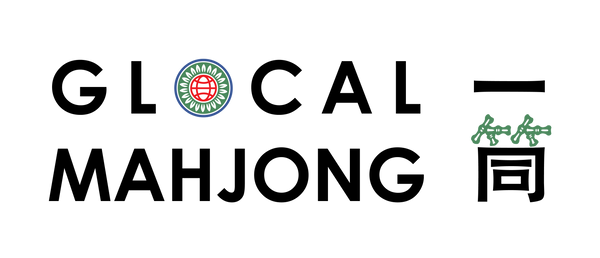
Mahjong X Mascots (1)
I started this youtube channel to practice our belief, “Mahjong Connects and Inspires”. The need to produce a video every week does give me a lot of pressure, but over years, I find pressure is an inevitable part of the creation process. Too often designers and artists keep thinking but not doing, it is only when we face deadlines that we manage to freeze our thought and consolidate ideas into creative works. I like comics and always want to design a mascot for Glocal Mahjong to connect ourselves better with people. Let me take this opportunity to force myself to work on it and make it happen. After it is created I can then use it to share stories, knowledge and messages, and widen the topics I can cover on this YouTube channel.
What is a mascot? A mascot is meant to be an instantly recognizable representation of brands, whether it is in the look of human, animal, or object. Actually, the word 'mascot' originates from the French term 'Mascotte' which means lucky charm and in Chinese,吉祥物. They started off in the nineteenth century from the baseball games from incidents of certain figures and animals appearing in winning games which caused them to believe that they were the good luck charm of the team. Gradually, every baseball team had their own mascot that appeared as costumed animal puppets to bring luck and entertain their spectators. All of these laid the tradition of having mascots for sports teams in modern-day America, whether they are professional or amateur ones. These also extend into major sports games like the Summer and Winter Olympics for which signature mascots were created as the spokesmen or ambassadors for these games. Over years, a wide variety of interesting mascots related to the native animals or figures of the game destinations have been created.
Apart from sports, mascots are created for important events like World Expo and themed parks and tourist attractions like Disney or Ocean Park in Hong Kong and large brands. They appeared as costumed puppets to interact and take pictures with visitors, which become great marketing tools via social media. Through licensing and merchandising, they are sold as soft toys and figures or turned into daily products like T-shirts, hoodies, caps, toys, mugs, key chains, etc. into patented souvenirs. All these have become very important revenue streams for the organizers.
Even mascots are not created for bringing revenue, they are created as marketing tools to connect better with audiences or customers beyond characterless logos, enliven inanimate brands and organizations, tell their stories and spread culture, and unite their fandom. Though it started from the United States, mascots could not be more popular than in Japan where mascots are created almost for any brands.
To make mascots adorable, they are often designed to look cute or in Japanese terms, kawaii. Typically, they follow the baby or infant animals’ top heavy proportion and include features like bulbous shape, short limbs, big heads, short limbs, larger foreheads, big and beady eyes, round cheeks, small chins and small noses. The cute looks of baby and infant animals are not just coincidences but have strong biological meanings to the sustainability of living species. The cute looks trigger living beings’ instinct to pay tremendous effort in grooming them, giving them extra care and love, and protecting them from danger.
However, simply being cute does not make good mascots if they are without character or being too perfect to be real, too conventional, too shallow, too pandering ……. Furthermore, often mascots evolve like living beings over time and they may also die down like the clown, Ronald McDonald retired quietly in 2016 after the scary clown craze that plagued the United States and clowns are more associated with horrors than with jokes and comedies.
Back to mahjong, I have browsed through various mascots related to mahjong, more often they just bear the names of various tiles. These include the robots I showed in my earlier episode on mahjong crossover robots, these chicken mascots were created for a soup in Taiwan made after the winning hands of thirteen orphans. Apart from these, there are also some animated tiles but I do not find anything with strong characters or meaningful stories behind them. All these reinforce my interest in creating families of mahjong mascots.
Despite I have done some initial designs, I found that just showing the looks without context and stories, they will remain soulless and without character. I better prepare a separate episode for them to debut.
